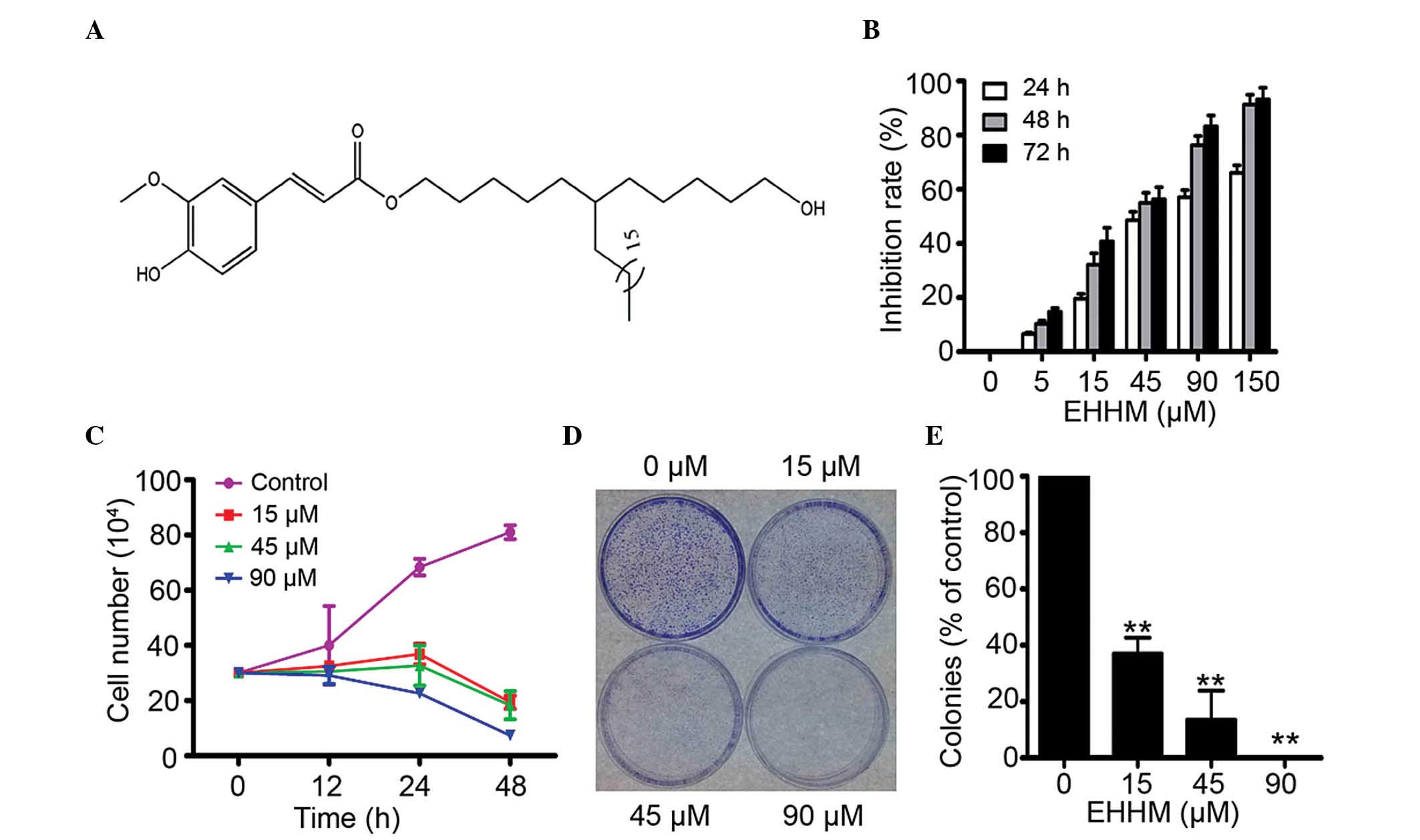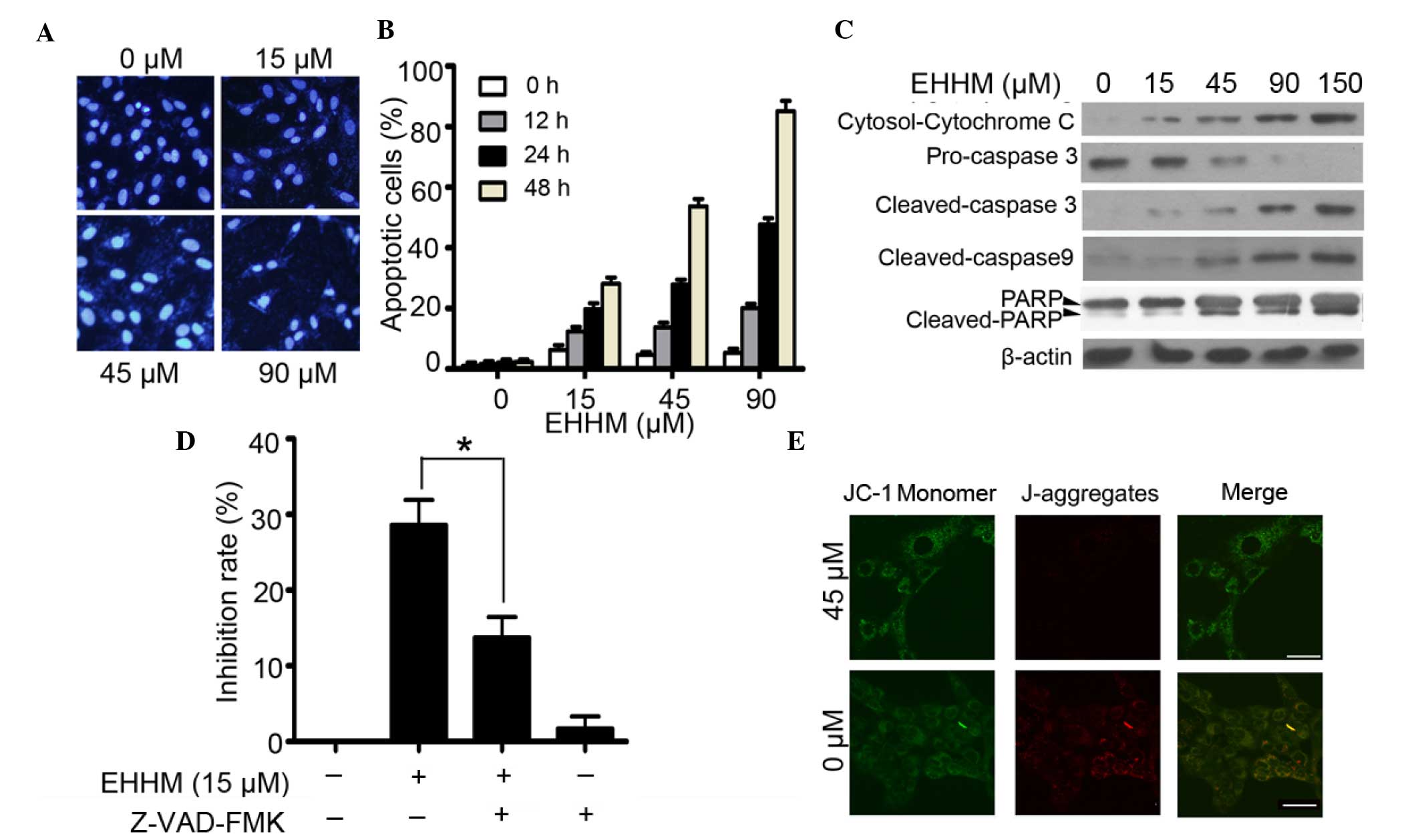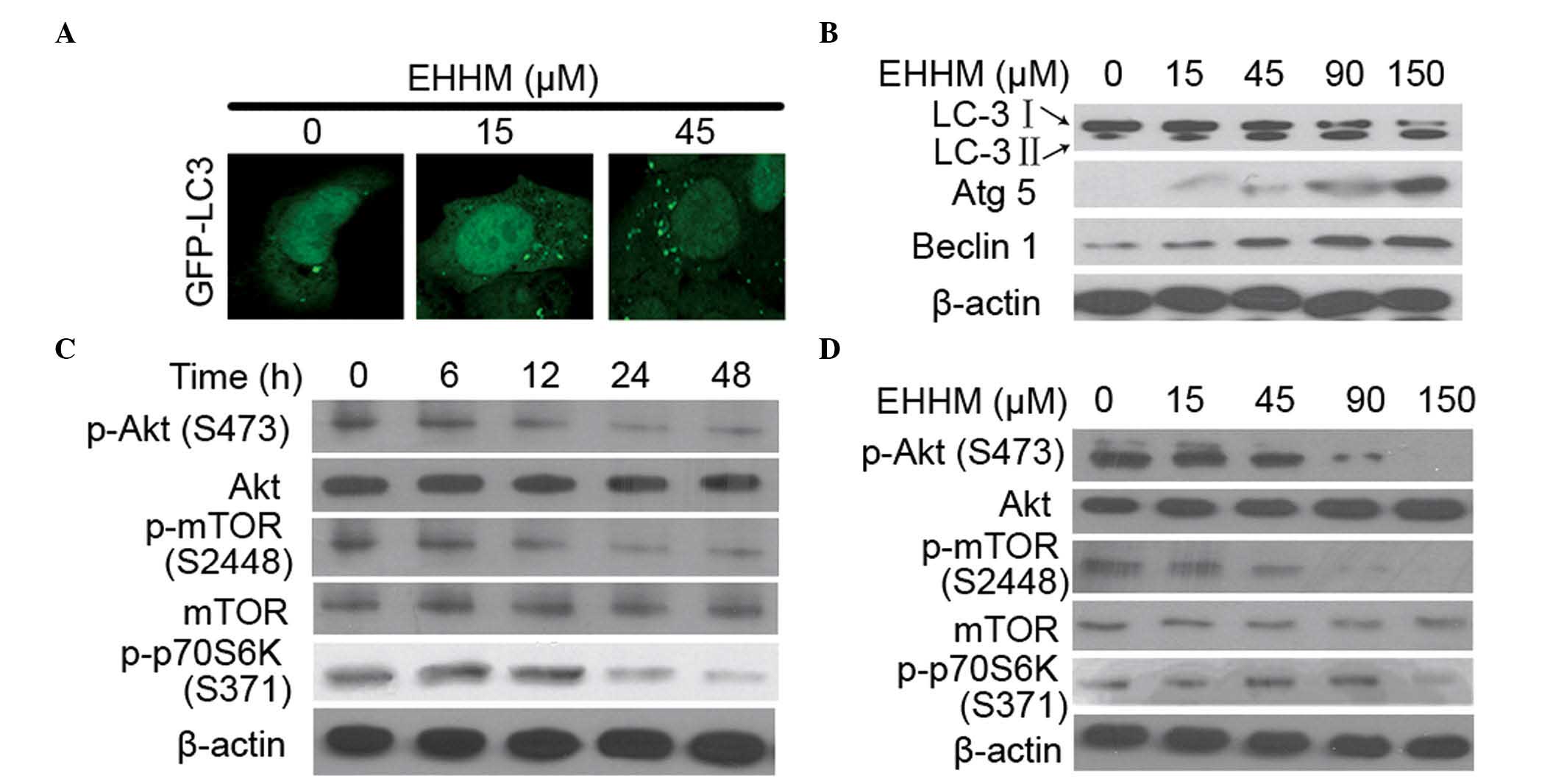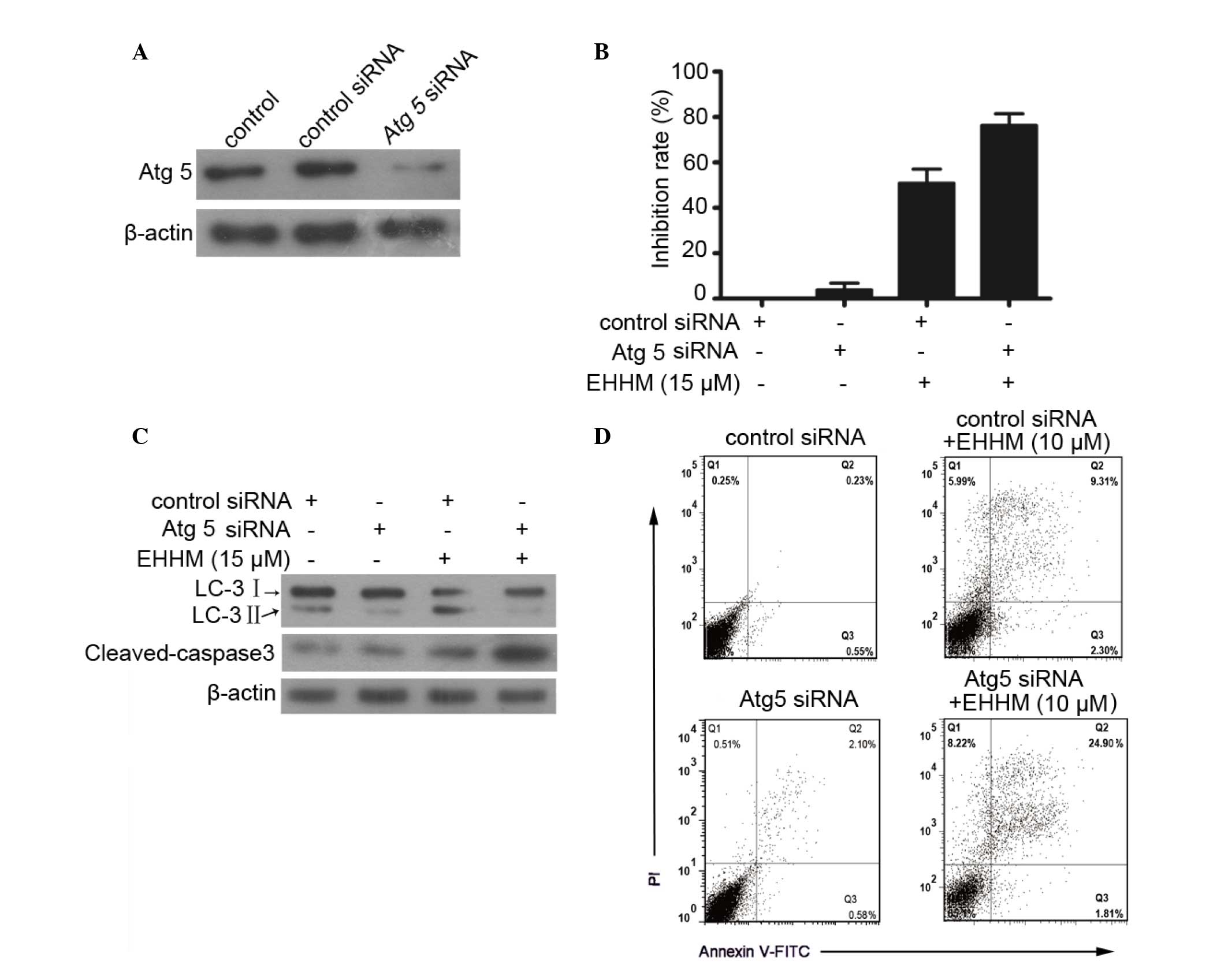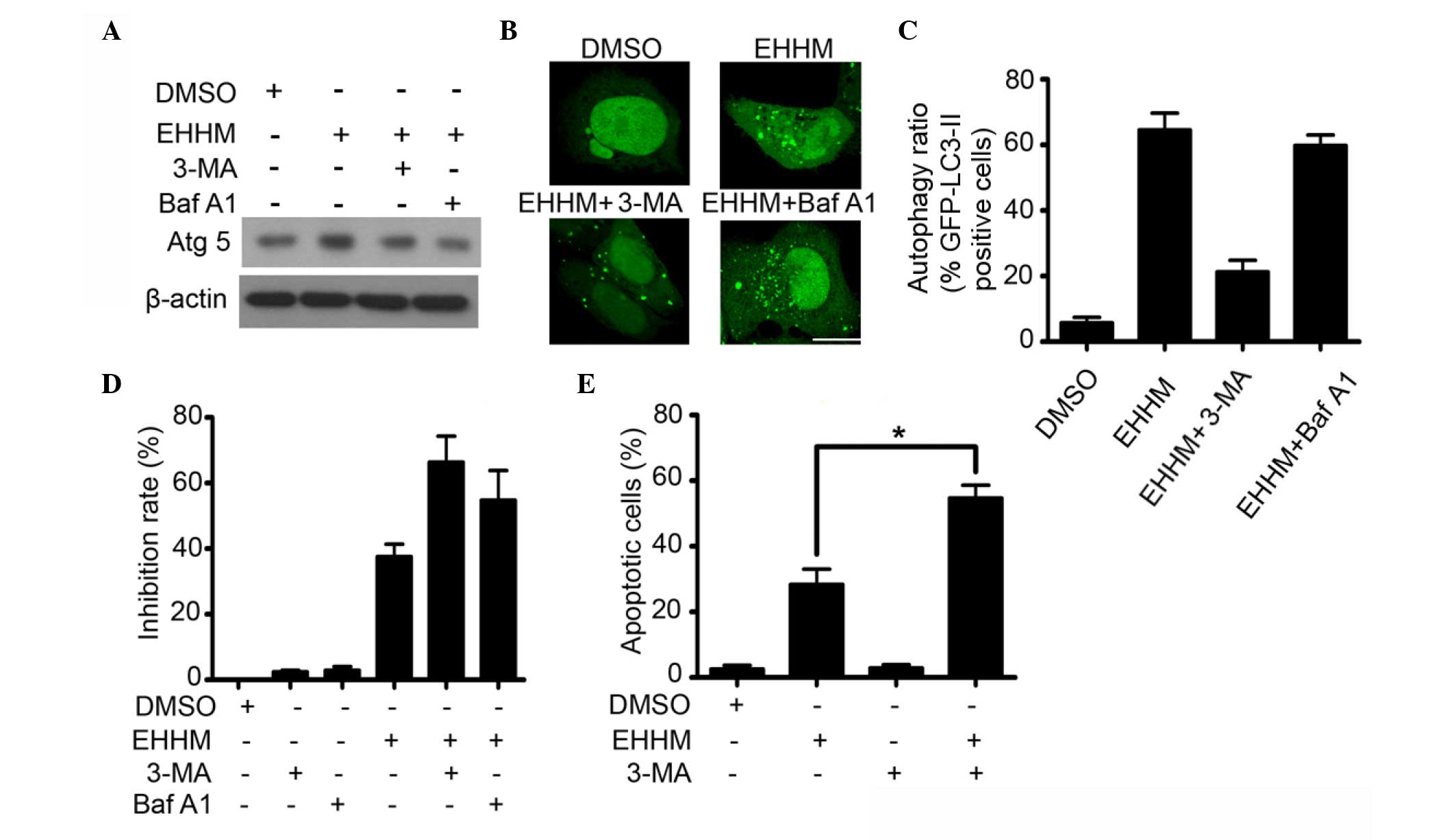|
1
|
Chen JG and Zhang SW: Liver cancer
epidemic in China: Past, present and future. Semin Cancer Biol.
21:59–69. 2011. View Article : Google Scholar : PubMed/NCBI
|
|
2
|
Bei CH, Bai H, Yu HP, Yang Y, Liang QQ,
Deng YY, Tan SK and Qiu XQ: Combined effects of six cytokine gene
polymorphisms and SNP-SNP interactions on hepatocellular carcinoma
risk in southern guangxi, china. Asian Pac J Cancer Prev.
15:6961–6967. 2014. View Article : Google Scholar : PubMed/NCBI
|
|
3
|
Liu HZ, Peng J, Peng CY, Yan M and Zheng
F: Glutathione S-transferase M1 null genotype and hepatocellular
carcinoma susceptibility in china and india: Evidence from an
updated meta-analysis. Asian Pac J Cancer Prev. 15:4851–4856. 2014.
View Article : Google Scholar : PubMed/NCBI
|
|
4
|
Fattovich G, Stroffolini T, Zagni I and
Donato F: Hepatocellular carcinoma in cirrhosis: Incidence and risk
factors. Gastroenterology. 127(5): Suppl 1. S35–S50. 2004.
View Article : Google Scholar : PubMed/NCBI
|
|
5
|
Bruix J and Sherman M: American
Association for the Study of Liver Diseases: Management of
hepatocellular carcinoma: An update. Hepatology. 53:1020–1022.
2011. View Article : Google Scholar : PubMed/NCBI
|
|
6
|
Lin GN, Jiang XM, Peng JW, Xiao JJ, Liu DY
and Xia ZJ: Prognostic significance of the peripheral blood
absolute monocyte count in patients with locally advanced or
metastatic hepatocellular carcinoma receiving systemic
chemotherapy. Asian Pac J Cancer Prev. 15:6387–6390. 2014.
View Article : Google Scholar : PubMed/NCBI
|
|
7
|
Cheung S and Tai J: In vitro studies of
the dry fruit of Chinese fan palm Livistona chinensis. Oncol Rep.
14:1331–1336. 2005.PubMed/NCBI
|
|
8
|
Kaur G and Singh RP: Antibacterial and
membrane damaging activity of livistona chinensis fruit extract.
Food Chem Toxicol. 46:2429–2434. 2008. View Article : Google Scholar : PubMed/NCBI
|
|
9
|
Zeng X, Wang Y, Qiu Q, Jiang C, Jing Y,
Qiu G and He X: Bioactive phenolics from the fruits of Livistona
chinensis. Fitoterapia. 83:104–109. 2012. View Article : Google Scholar : PubMed/NCBI
|
|
10
|
Singh R and Kaur G: Hemolytic activity of
aqueous extract of Livistona chinensis fruits. Food Chem Toxicol.
46:553–556. 2008. View Article : Google Scholar : PubMed/NCBI
|
|
11
|
Zhang YX, Abliz G, Ye WJ, Mutalipu Z, Li
XW, Wang HQ, Buranjiang G and Upur H: Mechanisms of hela cell
apoptosis induced by abnormal Savda Munziq total phenolics combined
with chemotherapeutic agents. Asian Pac J Cancer Prev. 15:743–747.
2014. View Article : Google Scholar : PubMed/NCBI
|
|
12
|
Xu H, Tian YN, Dun BY, Liu HT, Dong GK,
Wang JH, Lu SS, Chen B and She JX: A novel monoclonal antibody
induces cancer cell apoptosis and enhances the activity of
chemotherapeutic drugs. Asian Pac J Cancer Prev. 15:4423–4428.
2014. View Article : Google Scholar : PubMed/NCBI
|
|
13
|
Wang CD, Yuan CF, Bu YQ, Wu XM, Wan JY,
Zhang L, Hu N, Liu XJ, Zu Y, Liu GL and Song FZ: Fangchinoline
inhibits cell proliferation via Akt/GSK-3beta/cyclin D1 signaling
and induces apoptosis in MDA-MB-231 breast cancer cells. Asian Pac
J Cancer Prev. 15:769–773. 2014. View Article : Google Scholar : PubMed/NCBI
|
|
14
|
Wang YX, Cai H, Jiang G, Zhou TB and Wu H:
Silibinin inhibits proliferation, induces apoptosis and causes cell
cycle arrest in human gastric cancer MGC803 cells via STAT3 pathway
inhibition. Asian Pac J Cancer Prev. 15:6791–6798. 2014. View Article : Google Scholar : PubMed/NCBI
|
|
15
|
Lowe SW and Lin AW: Apoptosis in cancer.
Carcinogenesis. 21:485–95. 2000. View Article : Google Scholar : PubMed/NCBI
|
|
16
|
Chen H, Zeng X, Gao C, Ming P, Zhang J,
Guo C, Zhou L, Lu Y, Wang L, Huang L, et al: A new arylbenzofuran
derivative functions as an anti-tumour agent by inducing DNA damage
and inhibiting PARP activity. Sci Rep. 5:108932015. View Article : Google Scholar : PubMed/NCBI
|
|
17
|
Hsin IL, Ou CC, Wu TC, Jan MS, Wu MF, Chiu
LY, Lue KH and Ko JL: GMI, an immunomodulatory protein from
Ganoderma microsporum, induces autophagy in non-small cell lung
cancer cells. Autophagy. 7:873–882. 2011. View Article : Google Scholar : PubMed/NCBI
|
|
18
|
Sun J, Zhang C, Bao YL, Wu Y, Chen ZL, Yu
CL, Huang YX, Sun Y, Zheng LH, Wang X and Li YX:
Parthenolide-induced apoptosis, autophagy and suppression of
proliferation in HepG2 cells. Asian Pac J Cancer Prev.
15:4897–4902. 2014. View Article : Google Scholar : PubMed/NCBI
|
|
19
|
Luo GX, Cai J, Lin JZ, Luo WS, Luo HS,
Jiang YY and Zhang Y: Autophagy inhibition promotes gambogic
acid-induced suppression of growth and apoptosis in glioblastoma
cells. Asian Pac J Cancer Prev. 13:6211–6216. 2012. View Article : Google Scholar : PubMed/NCBI
|
|
20
|
Mathew R, Karantza-Wadsworth V and White
E: Role of autophagy in cancer. Nat Rev Cancer. 7:961–967. 2007.
View Article : Google Scholar : PubMed/NCBI
|
|
21
|
Schweichel JU and Merker HJ: The
morphology of various types of cell death in prenatal tissues.
Teratology. 7:253–266. 1973. View Article : Google Scholar : PubMed/NCBI
|
|
22
|
Levine B and Klionsky DJ: Development by
self-digestion: Molecular mechanisms and biological functions of
autophagy. Dev Cell. 6:463–477. 2004. View Article : Google Scholar : PubMed/NCBI
|
|
23
|
Kanzawa T, Germano IM, Komata T, Ito H,
Kondo Y and Kondo S: Role of autophagy in temozolomide-induced
cytotoxicity for malignant glioma cells. Cell Death Differ.
11:448–457. 2004. View Article : Google Scholar : PubMed/NCBI
|
|
24
|
Cui Q, Tashiro S, Onodera S, Minami M and
Ikejima T: Autophagy preceded apoptosis in oridonin-treated human
breast cancer MCF-7 cells. Biol Pharm Bull. 30:859–864. 2007.
View Article : Google Scholar : PubMed/NCBI
|
|
25
|
Høyer-Hansen M, Bastholm L, Szyniarowski
P, Campanella M, Szabadkai G, Farkas T, Bianchi K, Fehrenbacher N,
Elling F, Rizzuto R, et al: Control of macroautophagy by calcium,
calmodulin-dependent kinase kinase-beta, and Bcl-2. Mol Cell.
25:193–205. 2007. View Article : Google Scholar : PubMed/NCBI
|
|
26
|
Lee JY, Lee YM, Chang GC, Yu SL, Hsieh WY,
Chen JJ, Chen HW and Yang PC: Curcumin induces EGFR degradation in
lung adenocarcinoma and modulates p38 activation in intestine: The
versatile adjuvant for gefitinib therapy. PLos One. 6:e237562011.
View Article : Google Scholar : PubMed/NCBI
|
|
27
|
Fang HT, Zhang B, Pan XF, Gao L, Zhen T,
Zhao HX, Ma L, Xie J, Liu Z, Yu XJ, et al: Bortezomib interferes
with C-KIT processing and transforms the t(8;21)-generated. Proc
Natl Acad Sci USA. 109:2521–2526. 2012. View Article : Google Scholar : PubMed/NCBI
|
|
28
|
Lennartsson J, Ma H, Wardega P, Pelka K,
Engström U, Hellberg C and Heldin CH: The Fer tyrosine kinase is
important for platelet-derived growth factor-BB-induced signal
transducer and activator of transcription 3 (STAT3) protein
phosphorylation, colony formation in soft agar and tumor growth in
vivo. J Biol Chem. 288:15736–15744. 2013. View Article : Google Scholar : PubMed/NCBI
|
|
29
|
Zhao YH, Wang T, Yu GF, Zhuang DM, Zhang
Z, Zhang HX, Zhao DP and Yu AL: Anti-proliferation effects of
interferon-gamma on gastric cancer cells. Asian Pac J Cancer Prev.
14:5513–5518. 2013. View Article : Google Scholar : PubMed/NCBI
|
|
30
|
Yao G, Yang L, Hu Y, Liang J, Liang J and
Hou Y: Nonylphenol-induced thymocyte apoptosis involved caspase-3
activation and mitochondrial depolarization. Mol Immunol.
43:915–926. 2006. View Article : Google Scholar : PubMed/NCBI
|
|
31
|
Yang L, Zhou X, Yang J, Yin X, Han L and
Zhao D: Aspirin inhibits cytotoxicity of prion peptide PrP106-126
to neuronal cells associated with microglia activation in vitro. J
Neuroimmunol. 199:10–17. 2008. View Article : Google Scholar : PubMed/NCBI
|
|
32
|
Zhang G, Gurtu V, Kain SR and Yan G: Early
detection of apoptosis using a fluorescent conjugate of annexin V.
Biotechniques. 23:525–531. 1997.PubMed/NCBI
|
|
33
|
Wei H, Li Z, Hu S, Chen X and Cong X:
Apoptosis of mesenchymal stem cells induced by hydrogen peroxide
concerns both endoplasmic reticulum stress and mitochondrial death
pathway through regulation of caspases, p38 and JNK. J Cell
Biochem. 111:967–978. 2010. View Article : Google Scholar : PubMed/NCBI
|
|
34
|
Walsh DM, Tseng BP, Rydel RE, Podlisny MB
and Selkoe DJ: The oligomerization of amyloid beta-protein begins
intracellularly in cells derived from human brain. Biochemistry.
39:10831–10839. 2000. View Article : Google Scholar : PubMed/NCBI
|
|
35
|
Liu Y, Cao W, Zhang B, Liu YQ, Wang ZY, Wu
YP, Yu XJ, Zhang XD, Ming PH, Zhou GB and Huang L: The natural
compound magnolol inhibits invasion and exhibits potential in human
breast cancer therapy. Sci Rep. 3:30982013.PubMed/NCBI
|
|
36
|
Fernandes-Alnemri T, Litwack G and Alnemri
ES: CPP32, a novel human apoptotic protein with homology to
Caenorhabditis elegans cell death protein Ced-3 and mammalian
interleukin-1 beta-converting enzyme. J Biol Chem. 269:30761–30764.
1994.PubMed/NCBI
|
|
37
|
Nicholson DW, Ali A, Thornberry NA,
Vaillancourt JP, Ding CK, Gallant M, Gareau Y, Griffin PR, Labelle
M, Lazebnik YA, et al: Identification and inhibition of the
ICE/CED-3 protease necessary for mammalian apoptosis. Nature.
376:37–43. 1995. View Article : Google Scholar : PubMed/NCBI
|
|
38
|
Mizushima N and Komatsu M: Autophagy:
Renovation of cells and tissues. Cell. 147:728–741. 2011.
View Article : Google Scholar : PubMed/NCBI
|
|
39
|
He H, Dang Y, Dai F, Guo Z, Wu J, She X,
Pei Y, Chen Y, Ling W, Wu C, et al: Post-translational
modifications of three members of the human MAP1LC3 family and
detection of a novel type of modification for MAP1LC3B. J Biol
Chem. 278:29278–29287. 2003. View Article : Google Scholar : PubMed/NCBI
|
|
40
|
Kabeya Y, Mizushima N, Yamamoto A,
Oshitani-Okamoto S, Ohsumi Y and Yoshimori T: LC3, GABARAP and
GATE16 localize to autophagosomal membrane depending on form-II
formation. J Cell Sci. 117:2805–2812. 2004. View Article : Google Scholar : PubMed/NCBI
|
|
41
|
Zhong Y, Wang QJ, Li X, Yan Y, Backer JM,
Chait BT, Heintz N and Yue Z: Distinct regulation of autophagic
activity by Atg14L and rubicon associated with Beclin
1-phosphatidylinositol-3-kinase complex. Nat Cell Biol. 11:468–476.
2009. View Article : Google Scholar : PubMed/NCBI
|
|
42
|
Pyo JO, Jang MH, Kwon YK, Lee HJ, Jun JI,
Woo HN, Cho DH, Choi B, Lee H, Kim JH, et al: Essential roles of
Atg5 and FADD in autophagic cell death: Dissection of autophagic
cell death into vacuole formation and cell death. J Biol Chem.
280:20722–20729. 2005. View Article : Google Scholar : PubMed/NCBI
|
|
43
|
Saiki S, Sasazawa Y, Imamichi Y, Kawajiri
S, Fujimaki T, Tanida I, Kobayashi H, Sato F, Sato S, Ishikawa K,
et al: Caffeine induces apoptosis by enhancement of autophagy via
PI3K/Akt/mTOR/p70S6K inhibition. Autophagy. 7:176–187. 2011.
View Article : Google Scholar : PubMed/NCBI
|
|
44
|
White E: Deconvoluting the
context-dependent role for autophagy in cancer. Nat Rev Cancer.
12:401–410. 2012. View Article : Google Scholar : PubMed/NCBI
|
|
45
|
Wu YT, Tan HL, Shui G, Bauvy C, Huang Q,
Wenk MR, Ong CN, Codogno P and Shen HM: Dual role of
3-methyladenine in modulation of autophagy via different temporal
patterns of inhibition on class I and III phosphoinositide
3-kinase. J Biol Chem. 285:10850–10861. 2010. View Article : Google Scholar : PubMed/NCBI
|
|
46
|
Yamamoto A, Tagawa Y, Yoshimori T,
Moriyama Y, Masaki R and Tashiro Y: Bafilomycin A1 prevents
maturation of autophagic vacuoles by inhibiting fusion between
autophagosomes and lysosomes in rat hepatoma cell line, H-4-II-E
cells. Cell Struct Funct. 23:33–42. 1998. View Article : Google Scholar : PubMed/NCBI
|
|
47
|
Jemal A, Bray F, Center MM, Ferlay J, Ward
E and Forman D: Global cancer statistics. CA Cancer J Clin.
61:69–90. 2011. View Article : Google Scholar : PubMed/NCBI
|
|
48
|
Pourhoseingholi MA, Fazeli Z, Zali MR and
Alavian SM: Burden of hepatocellular carcinoma in Iran; Bayesian
projection and trend analysis. Asian Pac J Cancer Prev. 11:859–862.
2010.PubMed/NCBI
|
|
49
|
Norsa'adah B and Nurhazalini-Zayani CG:
Epidemiology and survival of hepatocellular carcinoma in north-east
Peninsular Malaysia. Asian Pac J Cancer Prev. 14:6955–6959. 2013.
View Article : Google Scholar : PubMed/NCBI
|
|
50
|
Arzumanyan A, Reis HM and Feitelson MA:
Pathogenic mechanisms in HBV- and HCV-associated hepatocellular
carcinoma. Nat Rev Cancer. 13:123–135. 2013. View Article : Google Scholar : PubMed/NCBI
|
|
51
|
Kondo Y, Kanzawa T, Sawaya R and Kondo S:
The role of autophagy in cancer development and response to
therapy. Nat Rev Cancer. 5:726–734. 2005. View Article : Google Scholar : PubMed/NCBI
|
|
52
|
Apel A, Herr I, Schwarz H, Rodemann HP and
Mayer A: Blocked autophagy sensitizes resistant carcinoma cells to
radiation therapy. Cancer Res. 68:1485–1494. 2008. View Article : Google Scholar : PubMed/NCBI
|
|
53
|
Paglin S, Hollister T, Delohery T, Hackett
N, McMahill M, Sphicas E, Domingo D and Yahalom J: A novel response
of cancer cells to radiation involves autophagy and formation of
acidic vesicles. Cancer Res. 61:439–444. 2001.PubMed/NCBI
|
|
54
|
Kanzawa T, Kondo Y, Ito H, Kondo S and
Germano I: Induction of autophagic cell death in malignant glioma
cells by arsenic trioxide. Cancer Res. 63:2103–2108.
2003.PubMed/NCBI
|
|
55
|
Boya P, González-Polo RA, Casares N,
Perfettini JL, Dessen P, Larochette N, Métivier D, Meley D,
Souquere S, Yoshimori T, et al: Inhibition of macroautophagy
triggers apoptosis. Mol Cell Biol. 25:1025–1040. 2005. View Article : Google Scholar : PubMed/NCBI
|















